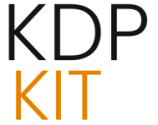
Current Market Favorites: Fiction and Nonfiction Trends for the Year
The overarching theme for 2025 is niche specificity. Broad categories are oversaturated; visibility is won in the ultra-specific sub-genre. Analyzing genre performance as we move deeper into the year points to a few extremely lucrative zones where reader demand is concentrated and competition, though present, is manageable if you target precisely.
Fiction Trends: Intensity, Loyalty, and Escapism
In the fiction space, reader appetite is leaning toward high-stakes emotional experiences and established, comforting tropes. Forget writing just ‘Romance’ or ‘Fantasy’; that’s like opening a grocery store without choosing a single item to stock. You need to go deeper.
Dark Romance remains a juggernaut, fueled by dedicated reader communities that demand morally complex anti-heroes, high emotional intensity, and often explore themes of control and redemption. To succeed here in 2025, you must analyze the current sub-niche favorites—think ‘enemies-to-lovers’ meeting ‘mafia/organized crime’ tropes, or stories focused on ‘anti-hero redemption arcs’. These specific keyword clusters unlock immediate visibility to a hungry audience.
The second major fiction pillar is the enduring appeal of Cozy Mystery. This genre thrives on character loyalty and the potential for endless series development. Readers in this sub-genre aren’t just buying a book; they are investing in a recurring relationship with the protagonist and the small-town setting. Look at where the growth is: sub-niches like culinary mysteries or historical cozy settings are capturing significant sales velocity.
For those leaning toward speculative fiction, ‘Science Fiction/Fantasy’ continues its upward climb, but again, the key is specificity. Look for rising keywords like “space opera,” “gamelit,” and genre-blends such as “cozy fantasy” (like the success seen with books similar to Legends and Lattes).
Actionable Takeaway for Fiction Authors: Don’t just write *a* book; write the *next book* in a trending sub-niche. Spend time researching the current top 100 BSR books in your chosen category to see what specific flavor is selling right now. A well-executed entry into a hot dark romance sub-niches will outperform a generic romance novel by orders of magnitude.
Nonfiction Trends: Actionable Utility and Evergreen Needs
Nonfiction sales are dictated by utility. Readers are seeking immediate, evidence-based solutions to their problems, or reliable guides to personal betterment. The days of vaguely written self-help books are largely over—readers expect a clear path forward, often with templates or checklists included.. Find out more about profitable amazon kdp fiction niches 2025.
- Personal Development: This evergreen category has sharpened its focus onto actionable habit formation, structured mindfulness practices, and clear career transition frameworks. Readers want systems, not just philosophy.
- Health & Wellness: Demand is steady, but hyper-specific diet guides—such as specialized keto, carnivore, or specific athletic nutrition plans—are outperforming generalized wellness books. Mental health guides focused on practical, evidence-based tools are also soaring.
- Business & Entrepreneurship: This market demands currency. Success is found in specialized guides covering the *current* digital models, advanced niche marketing strategies, or specific financial instruments like updated crypto or stock market analysis, provided the content is clear and verifiable. General business advice rarely breaks through the noise.
The lesson here is about providing immediate, tangible value. If your nonfiction book doesn’t promise a direct improvement to the reader’s life—whether it’s saving them money, saving them time, or improving their health—you’re fighting an uphill battle against established authority figures.
Low-Content and Activity Books as Essential Income Diversifiers
If you want to build a buffer against the inherent risks of relying solely on long-form content—like high editing costs, long production times, and unpredictable genre shifts—diversification into the low-content and activity book sectors is not optional; it is a fundamental risk-mitigation strategy for the modern KDP publisher. These formats allow for rapid iteration and capital deployment.
The Appeal of Speed and Low Production Overhead
Low-content books (L/C) are the counter-cyclical engine of a publishing business. They include specialized journals, intricate coloring books, puzzle books, and planners. Their production is often simpler and significantly faster than a 90,000-word novel, making them perfect for the high-frequency publishing model.
The beauty of L/C lies in its low barrier to entry regarding *inventory risk*. Because KDP operates on a print-on-demand basis, you hold zero physical stock. Amazon prints and ships only when a sale occurs, meaning your overhead cost is the time you spend designing the interior and cover.
Consider this: a niche novel can take a year and thousands of dollars to produce for a single potential income stream. A highly specialized, well-researched guided journal for a very specific ailment or hobby, however, can be created in a week and immediately begin contributing to your monthly revenue. This builds your overall digital footprint in the Amazon ecosystem exponentially.. Find out more about profitable amazon kdp fiction niches 2025 guide.
Spotlight on 2025 Low-Content Winners
While L/C publishing used to be a “get rich quick” scheme, the market has matured. In 2025, success hinges on quality, branding, and niche execution, not just mass uploads. Simply uploading blank notebooks won’t cut it anymore.
What is driving sales now?
- Utility Planners & Journals: Moving beyond generic planners, the winners are *highly specific* journals. Examples include “Cleaning schedule and checklist notebooks,” “Bratva Mafia Family Trackers” (cross-genre appeal), or gratitude journals tailored for specific recovery groups.
- Puzzle & Game Books: These offer high engagement. The ‘Would You Rather’ book format for kids, capitalizing on known games, is seeing massive success, sometimes earning over \$35,000 a month for a single title priced under \$10. Hard word searches for adults and relaxing memory games also perform well.
- Branded Collections: The most successful publishers are creating entire *brands* around their L/C output, often taking designs and selling them as premium printables outside of Amazon. This diversification off-platform is a key strategy for established L/C publishers.
If you want to understand the production side, learning the fundamentals of creating these assets is vital. Effective low-content book production requires mastering tools like Canva or professional template sites to ensure your interiors look clean and professional—a non-negotiable in this competitive space.
Financial Mechanics and Royalty Realities for the Modern Publisher
Now, let’s talk brass tacks. The most brilliant genre selection in the world collapses without a solid understanding of the KDP royalty structure. This is where many talented authors accidentally leave 30-50% of their potential earnings on the table. The rules changed mid-year, and ignoring them is costly.
Understanding Tiered Royalty Structures for Ebooks and Print Formats. Find out more about profitable amazon kdp fiction niches 2025 tips.
For digital products—the Kindle eBooks—the system is famously tiered and designed to encourage a specific price sweet spot.
The eBook Royalty Sweet Spot: 70% vs. 35%
Amazon continues to offer its most favorable compensation rate—70% royalty—for eBooks priced between \$2.99 and \$9.99. If you price below \$2.99 or above \$9.99, your compensation drops sharply, almost always to the 35% rate. This is a clear incentive. A book priced at \$10.00 will earn you significantly less per copy than one priced at \$9.99. The 70% tier is where scalable eBook income lives.
- The Caveat: To qualify for the 70% rate, your eBook list price must generally be at least 20% below the list price of the print edition, if one exists.
The Print Royalty Shift: The 2025 Print Threshold
This is the most critical update since June 10, 2025. The compensation for physical print books (paperback and hardcover) is now tiered based on a price threshold, which varies by region.
On Amazon.com, the rule is stark: Print books priced at or below \$9.98 will now earn a 50% royalty rate (down from the previous 60%) before printing costs are deducted. Books priced *above* this threshold retain the higher 60% rate. This impacts every author who priced their paperback affordably, often under \$9.99, to capture price-sensitive readers.
For print books, your final take-home profit is calculated as: (List Price * Royalty Percentage) – Printing Cost. Since there is no inventory risk with Print-on-Demand (POD), this cost is factored directly into your per-unit profit, meaning the paperback royalty, even at the higher tier, is inherently lower than the maximum eBook potential.
This dynamic forces a very careful KDP pricing calibration across formats. You must weigh the increased volume a lower price might bring against the reduced per-unit profit post-June 2025 royalty cut.
Pro Tip: Amazon also introduced slight *reductions* in color printing costs in certain marketplaces around the same time. For certain color interior books—a major factor in activity books—these cost reductions help mitigate, but do not entirely offset, the royalty rate drop.. Find out more about profitable amazon kdp fiction niches 2025 strategies.
Reinvestment Cycles: Scaling from Initial Passive Income
The term “passive income” is the great siren call of self-publishing, but in the modern KDP landscape, it functions more like delayed and leveraged income. Initial earnings are rarely truly passive; they demand active, strategic reinvestment to generate scale.
The core principle separating the one-book author from the publishing empire owner is this mandatory reinvestment cycle. Do not withdraw those first few hundred dollars. Channel them immediately back into the business engine to accelerate production and reach.
The Four Pillars of Reinvestment for Scale
To transition from sporadic sales to consistent monthly revenue, a self-publisher must consciously fund these areas:
- New Content Creation (The Asset Build): Use initial profits to commission new content. This might mean hiring a specialized ghostwriter for a non-fiction follow-up, or, more efficiently for speed, hiring an interior designer or formatter for more low-content book production. More assets indexed by Amazon’s algorithm equals more chances to be found.
- Targeted Advertising Campaigns: Organic discovery is slow. Reinvesting in Amazon Advertising (AMS) or even external ads (like on TikTok or Instagram, which are key traffic drivers in 2025) drives immediate, measurable traffic to new listings. This boosts their initial sales rank, which Amazon rewards with better organic placement.
- Professional Quality Outsourcing: This is critical. If you are not an expert cover designer or copy editor, paying a professional will yield better results, which directly translates to higher conversion rates and sales rank. Successful scaling often involves outsourcing time-consuming tasks so you can focus on high-level strategy and iteration.
- System Building and Automation: Eventually, scaling requires moving from *doing* to *overseeing*. Reinvest in tools or services that automate tracking, ad management, or even the creation pipeline, allowing you to manage dozens or hundreds of indexed assets without adding hours to your workday.
- Social Media Buzz: Platforms like TikTok continue to drive massive, trend-based sales, particularly in fiction and some non-fiction areas. Creating buzz here signals to Amazon that there is external, organic demand for your title.
- Email List Nurturing: For nonfiction, capturing reader emails from a lead magnet in your book allows you to market future titles directly, ensuring consistent sales for your backlist and new launches. This creates a predictable sales bump that the algorithm recognizes.
- Consistency is Currency: In all genres, but especially fiction series and L/C publishing, the *speed* and *consistency* of your releases is a factor. The algorithm favors prolific authors who keep readers engaged.
- Determine Your Break-Even Point: You cannot price a book below its printing cost. KDP automatically sets the minimum price based on production cost divided by the royalty rate (e.g., for the U.S., the *new* rate is 0.50 for lower-priced books).
- Target the 60% Tier: If your book is thick or has color pages, its printing cost might push your minimum price above the \$9.98 threshold automatically. If so, great—you maintain the 60% royalty.
- The Low-Content Trap: Many L/C books are priced at \$7.99 or \$8.99 to be impulse buys. These are the titles most immediately impacted by the drop from 60% to 50% royalty for those sales. If a \$7.99 book previously earned you \$3.50 (60% of price minus costs), it might now earn you closer to \$2.80 (50% of price minus costs), a significant hit if you sell high volume.
- Strategy Adjustment: For highly optimized L/C titles, test raising the price to \$10.99 or \$11.99 if the market supports it, pushing you into the 60% tier and potentially recouping lost per-unit profit through slightly lower volume. You must use a KDP pricing calibration tool to model this accurately for each region.
- Hyper-Niche Targeting: Stop publishing in broad categories. Dive deep into the current sub-niches of Dark Romance, Cozy Mystery, Actionable Self-Help, or specialized L/C journals where reader demand is concentrated and competition is less generalized.
- Dual-Format Optimization: Strategically price your eBooks to maximize the 70% royalty (\$2.99–\$9.99) and aggressively review your print book pricing to ensure you are either comfortably above the new regional thresholds or that the profit margin on the 50% tier is acceptable for that specific title’s production cost.
- Mandatory Reinvestment: Treat your first profits as seed capital. Immediately channel earnings into commissioning more high-quality assets (books or L/C interiors) and funding targeted advertising to build sales momentum on new launches.
- Build Your Brand Off-Amazon: View your books as entry points to a larger ecosystem. Start building an email list or creating a unique brand presence on social media to insulate your revenue from platform volatility. This is how you build an actual business, not just a book portfolio.
The goal is to create a self-fueling machine. Every book you publish, even a simple journal, generates a micro-dividend that must be immediately redeployed to purchase *more* assets or *better* marketing. This approach is what propels an author from a handful of modestly selling titles to a diversified portfolio capable of generating truly scalable, long-term success. This is the path to making your income passive—by front-loading the hard work and strategic capital deployment.. Find out more about Profitable amazon kdp fiction niches 2025 overview.
Deep Dive: Metadata Mastery in the Post-Algorithm Era
The way Amazon’s search and ranking algorithm works has demonstrably shifted. The old strategy of “keyword stuffing” titles and descriptions has been largely superseded by a focus on reader performance metrics. Amazon prioritizes books that people actually click on, buy, and read consistently.
Optimizing Titles and Keywords for Click-Through
Your title and cover are now a single, crucial marketing unit. They must be compelling enough to earn the click in a crowded search result page.
Instead of a title packed with every relevant search term—e.g., “The Ultimate Productivity Planner Journal with Goal Setting and Daily Tasks Tracker for Business Professionals”—the 2025 strategy favors readability and direct appeal.
The modern approach is cleaner, using keywords strategically within the main title and letting the back-end category tags and description handle the long-tail variations. A better title structure is: “The Ultimate Productivity Planner: Achieve Your Goals and Stay Organized.” This is more readable, still contains key phrases, and focuses on the *benefit* to the reader.
The Power of Sub-Category Ranking
While getting a BSR in the top 100,000 overall is nice, true visibility comes from dominating a tight sub-category. A book ranking #5 in the “Scottish Historical Dark Romance” sub-niche might be making more money than a book ranking #50,000 in the general “Romance” category. Your metadata strategy must aim for the deepest, most specific category possible where your sales rank is most competitive.
Leveraging External Marketing to Signal Demand
Amazon algorithms are increasingly looking outside their platform for signals of a book’s true value. Consistent external marketing builds momentum that the internal algorithm rewards.. Find out more about Best performing nonfiction kdp subgenres for high visibility definition guide.
Navigating the New Print Royalty Reality: A Pricing Deep Dive
The mid-2025 royalty adjustment for print books forces a re-evaluation of any book priced near the new threshold. This isn’t just about your U.S. earnings; it’s about every international marketplace where you are selling paperbacks.
When pricing your print book in 2025, you must run the numbers based on the new structure:
This landscape reinforces that the KDP business is a numbers game. You are running a digital manufacturing and distribution company, and overlooking the operational mechanics means leaving money behind, regardless of how good your story or design is. As one leading analyst stated, “The era of exploitable niches and high sales from non-books and the like is long past… [S]uccess now just needs solid research and quality production instead of mass uploads”.
Conclusion: Your Actionable Blueprint for Sustainable KDP Growth
The KDP entrepreneur of 2025 succeeds by being agile, precise, and reinvestment-focused. The platform rewards diligence, not luck. To cement your position and transform your early wins into scalable, long-term passive income, focus your efforts on these non-negotiable actions:
The mechanics are detailed, the market shifts constantly, but the opportunity remains vast for those who treat self-publishing as the serious business it has become. The market doesn’t reward good intentions; it rewards data-driven execution. Are you ready to start executing on this 2025 blueprint?
What genre or low-content niche are you prioritizing for Q4 2025, and what’s the single biggest pricing challenge you are facing under the new royalty structure? Let us know in the comments below—let’s troubleshoot the mechanics together.








